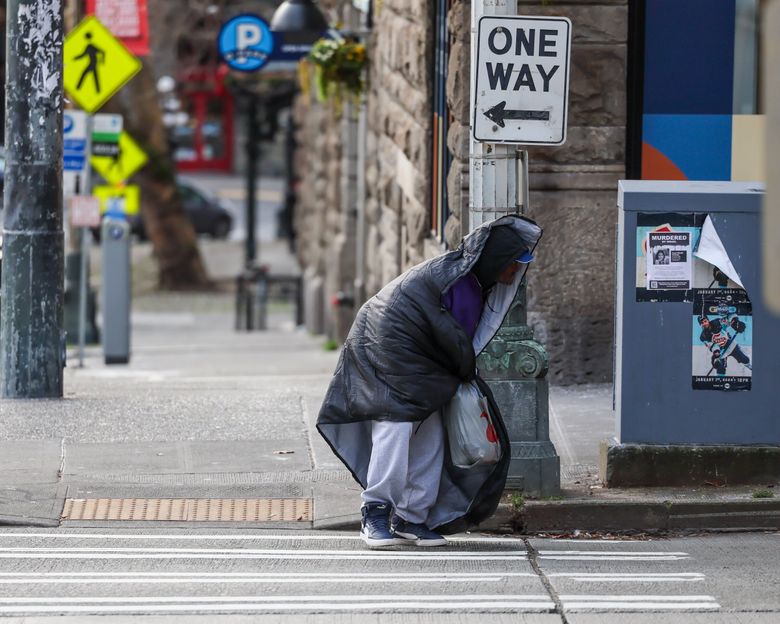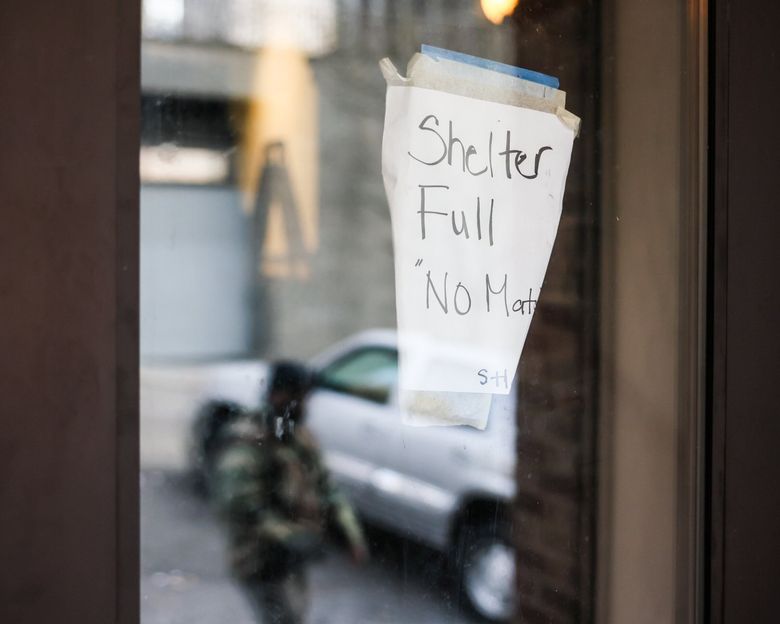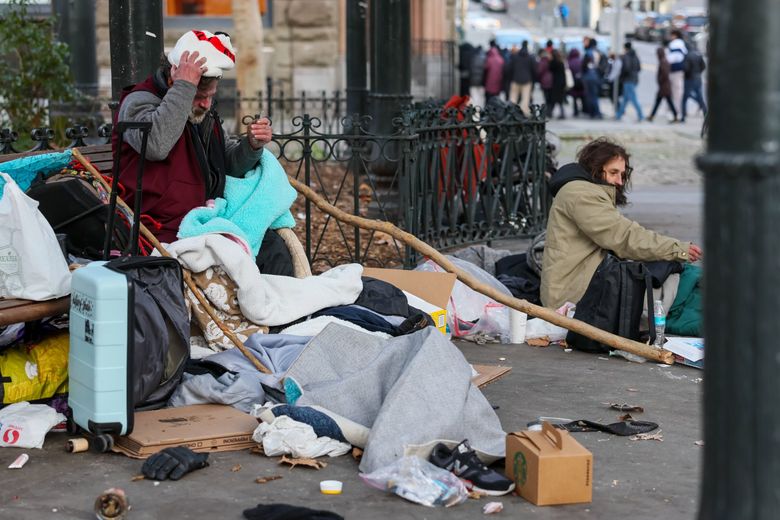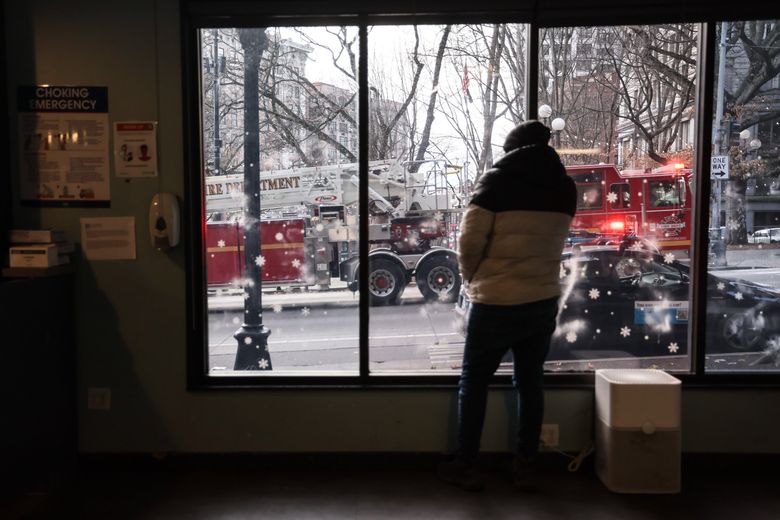
On what could be one of the coldest weekends of the year, the majority of people living outside on Seattle’s streets and across King County didn’t have an indoor space to sleep.
It’s a hard and, possibly, deadly truth of the region’s growing homelessness crisis. There are not enough shelter beds and even fewer emergency weather beds.

Temperatures in Seattle dipped to 14 degrees Friday night and crawled to a high of 22 on Saturday, according to Seattle’s National Weather Service. Sunday is expected to get a little warmer, with a high of 30 degrees.
The city won’t see temperatures above freezing until Tuesday, said weather service meteorologist Maddie Kristell.
Amid the cold snap, the King County Regional Homelessness Authority worked with the city of Seattle and The Salvation Army to add 100 more shelter beds to the Seattle Center Exhibition Hall — the city’s largest severe weather shelter — totaling 300 spaces for Saturday night. It held 185 people Friday.

At the same time, the seven other severe weather shelters across King County said they were far over capacity or nearing it — a clear indication of the need.
“People were early to get in and just so appreciative of coming in,” said Pastor Jenny Partch, director of Burien’s severe weather shelter and leader of the Highline United Methodist Church, where the shelter is housed.
In past years, the church rarely filled up on the first night. But they had exactly 50 people eager to fill their 50 spots when the church first opened Thursday evening, Partch said.
Chad Jensen was one of them.
“[It’s] comforting to know that they care enough to point us in the right direction to go, make sure we’re gonna stay warm and not wake up a frozen Popsicle,” he said from inside the church Friday.

But that space, like most emergency shelters, closes in the daytime, leaving people to search for other refuge.
About two dozen people escaped the cold Saturday afternoon by checking into the Salvation Army’s day center at Fourth Avenue and Jefferson Street, near Pioneer Square, located underneath a shelter.
A 64-year-old man named Dave said he planned to spend Saturday night on a mat upstairs, having snagged a spot a couple of nights before. Others weren’t so lucky. A handwritten sign taped on the door to the upstairs space read, “Shelter Full. No Mats.”
Another guest, William, said he’d probably spend Saturday night on the bus, like he did Friday night. His apartment had its electricity disconnected three weeks ago, he said. He left it Friday after he ran out of fuel for the hibachi grill he was using to heat the place, he said.
Outside, the streets of Pioneer Square were mostly deserted, but some people were still camped in tents, including a shivering man named Robert who said he recently arrived from California.
“It’s freezing,” Robert said. And he zipped up the door to his tent.
During the 2022 Point in Time count, more than 13,000 people were counted experiencing homelessness in one day in King County and over 7,600 of them were living outside.
Public Health – Seattle & King County’s No. 1 concern when severe weather hits and temperatures drop below freezing is hypothermia, spokesperson Kate Cole said. The condition can cause people to become unconscious and die.
The King County Medical Examiner’s Office reported at least four people presumed to be homeless died last year, one as recently as Dec. 2.
Josh Garcia and his colleague Kirby Rodriguez are both outreach coordinators for REACH, one of the region’s largest homeless outreach providers. They were outside all week, meeting with their clients, handing out supplies and fliers about the severe weather shelters opening.
One client was chopping wood, Garcia said, and planned to stick it out. Others were undecided whether they’d leave their belongings or their tent to try to get inside.
Garcia and Rodriguez said they planned to join their colleagues to check on people Saturday and try to help some get inside.

“It’s cold, and the hope is we can do our best,” Garcia said. But he sounded worried.
“When it comes to cold weather … some folks are not going to make it,” he said. “That’s the sad reality of it, too.”
"severe" - Google News
January 14, 2024 at 09:00PM
https://ift.tt/eC79azA
Seattle, King County severe weather shelters fill fast during cold snap - The Seattle Times
"severe" - Google News
https://ift.tt/jxXdYHr
Shoes Man Tutorial
Pos News Update
Meme Update
Korean Entertainment News
Japan News Update
Bagikan Berita Ini















0 Response to "Seattle, King County severe weather shelters fill fast during cold snap - The Seattle Times"
Post a Comment